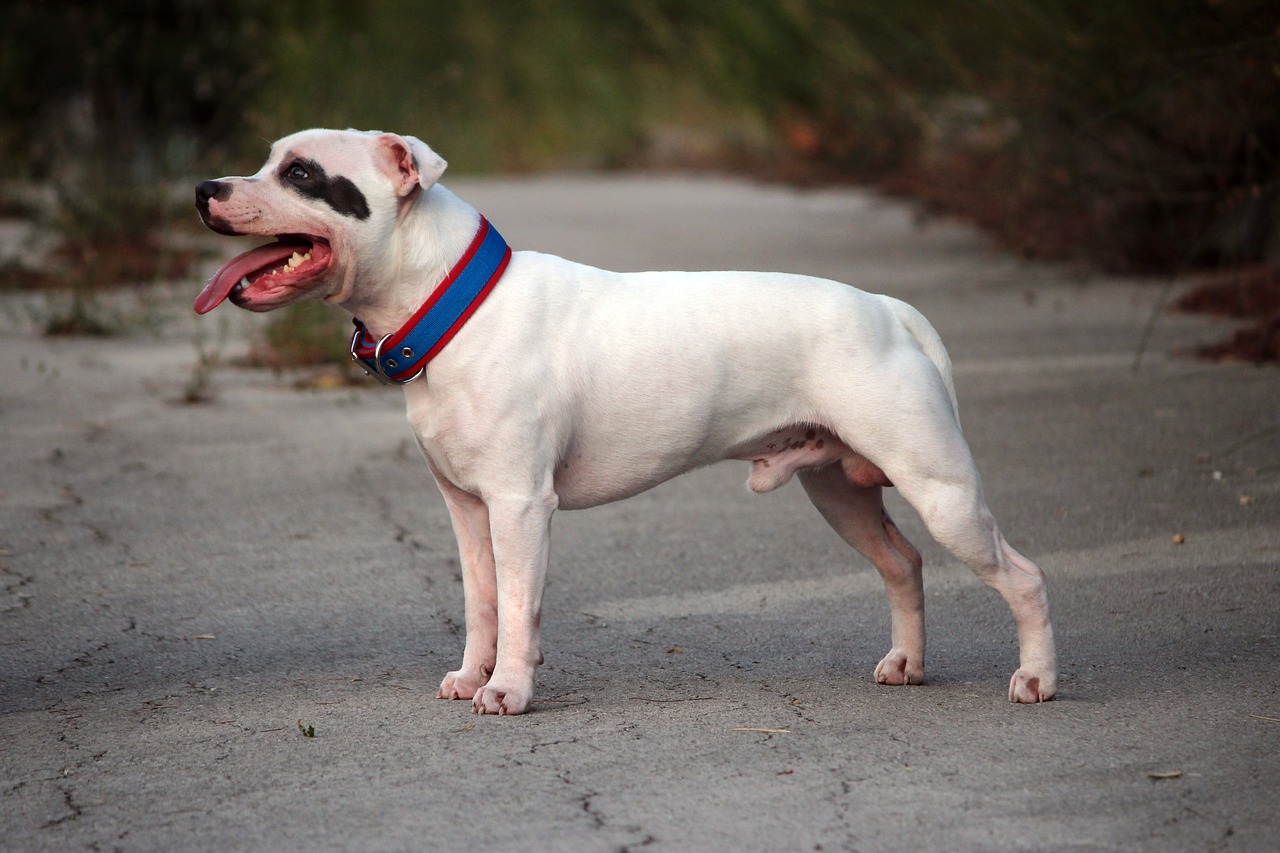Staffordshire Bull Terrier: A Loyal and Energetic Companion – Staffordshire Bull Terriers, often affectionately called Staffies, boast a rich history and vibrant personality that have captured the hearts of dog lovers worldwide.

Introduction to Staffordshire Bull Terrier
These dogs trace their roots to 19th-century England, where they were bred for bull-baiting and later as beloved family pets. Despite their muscular appearance, Staffies are known for their friendly nature and affectionate demeanor.
Physical Attributes
With a stocky build and a distinctive “Staffie” smile, these dogs exude strength and charm. Their short coat comes in various colors, showcasing their unique individuality.
Personality Traits
Staffies are renowned for their unwavering loyalty and boundless affection toward their families. Their playful and energetic nature makes them wonderful companions for active households.
Training and Socialization
Early training and socialization are pivotal for a well-rounded Staffie. Positive reinforcement techniques and exposure to various environments help shape their well-mannered behavior.
Health Concerns
Like all breeds, Staffies may be prone to certain health issues. Regular vet check-ups and a balanced diet can help maintain their overall well-being.
Exercise Needs
These dogs thrive on physical activities and require regular exercise to stay happy and healthy. Engaging them in play sessions or brisk walks fulfills their need for stimulation.
Feeding Guidelines
Proper nutrition is essential for a Staffie’s health. High-quality dog food, portioned according to their size and activity level, ensures their nutritional needs are met.
Living with a Staffordshire Bull Terrier
Despite their robust appearance, Staffies adapt well to various living conditions and form strong bonds with their families. Their affectionate nature makes them great companions for households with children and other pets.
Myths and Misconceptions
Unfortunately, Staffordshire Bull Terriers are often misunderstood due to misconceptions surrounding their temperament. In reality, they are loving and gentle dogs when raised in nurturing environments.
Legal Considerations
Breed-specific legislation in some areas may impact ownership. Responsible ownership and advocacy against breed discrimination are crucial for their well-being.
Rescue and Adoption
For those considering adding a Staffie to their family, adopting from reputable rescues ensures these loving dogs find forever homes.
Grooming Needs
Maintaining their coat and hygiene is relatively easy, requiring minimal grooming. Regular brushing and occasional baths keep them looking their best.
Famous Staffordshire Bull Terriers
Several notable Staffies have made their mark in various fields, showcasing the breed’s versatility and charm.
The Staffordshire Bull Terrier Community
Engaging with fellow enthusiasts through clubs and online communities offers support, information, and camaraderie among Staffie lovers.
Conclusion
Staffordshire Bull Terriers embody loyalty, affection, and a zest for life, making them cherished companions for those seeking a devoted canine friend.
FAQs
- Are Staffordshire Bull Terriers good with children?
- Absolutely! They are known for their loving and gentle nature, making them excellent companions for kids.
- Do Staffies require a lot of exercise?
- Yes, they thrive on physical activities and need regular exercise to stay healthy and happy.
- Are Staffordshire Bull Terriers aggressive?
- No, with proper training and socialization, they are friendly and affectionate dogs.
- What are common health concerns for Staffies?
- Some health issues they may face include hip dysplasia and skin conditions.
- Can Staffies live in apartments?
- Yes, they adapt well to different living conditions, including apartments, given they receive proper exercise and attention.




